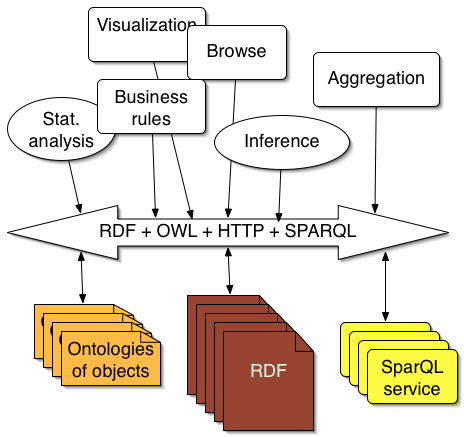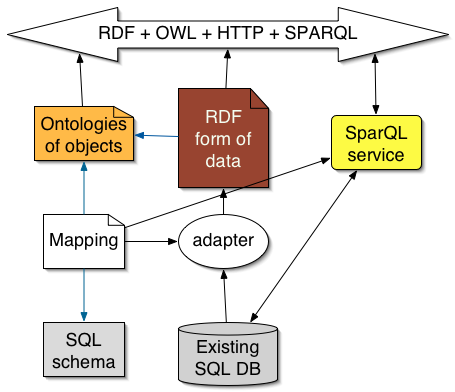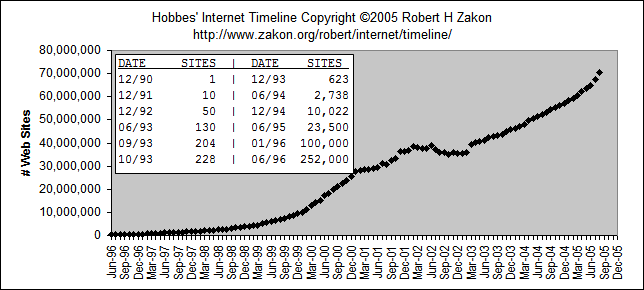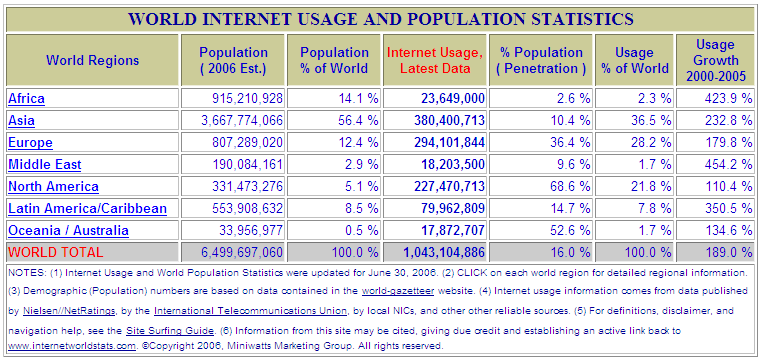Overview

- Success of the Web and the Value of standards
- World Wide Web Consortium
- Evolution of Web technologies
- Focus on areas which could have an impact to your business
- ... and in particular, Semantic Web
What Led to the Web's Success?

- Simple architecture - HTML, URI, HTTP
- Networked - value grows with data, services, users
- Extensible - from Web of documents to .. you'll see in a bit
- Tolerant - works with imperfect mark-up, data, links, SW
- Universal - independent of HW, OS, SW, language, ability
- Free / cheap - browsers, information, services
- Simple (and fun) for users - text, graphics, links
- Powerful - for people (and machines)
- Open standards ...
Why are Open Standards Important?
- Cross-application integration
- Avoids vendor lock-in
- … need a particular operating system and/or browser to file
taxes, access health insurance data, …
- Access for all
- Developers, systems, users know what to expect
- Unexpected reuse
- e.g., Web on phones, Google Pagerank, your data is useful to
others
- Open, RF standards = good business
sense ...
- Enable unencumbered implementation of foundational standards
- Enable commerce and communication to thrive on top of standards
- Customers / gov't regulations will mandate them
Web Usage and Technologies are Evolving ...
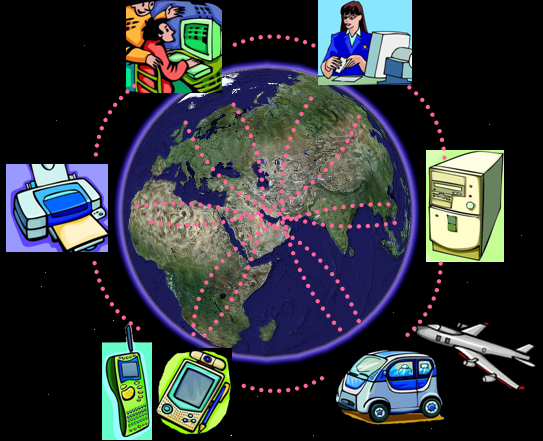
- From a Web of Documents ...
- Toward One Web ...
- ... of Data and Services
- ... on Everything
- ... for Everyone
- -- think Web 2.0+, Web as a platform, etc.
Engineering an Interoperable Foundation of the Web
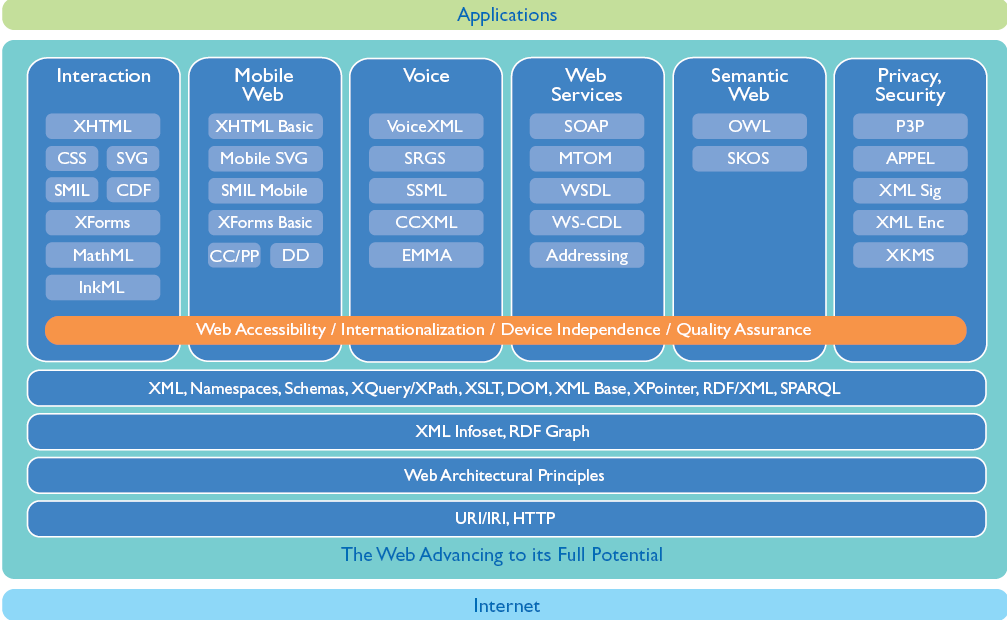
The Real Question
- Q: Which of these are relevant to you?
- A: All of them…

- But let's look at W3C's emerging technologies, and focus on
one
Leading Edge: Web for Everyone

Leading Edge: Web on Everything

- Interaction Technologies: XHTML, XForms, CSS, MathML, SVG,
SMIL, Voice, Multimodal
- Rich Web Clients: Compound Doc Formats, Web Apps APIs
(AJAX) and Formats (demos: fatcats, cubes, navigator)
- Mobile Web Initiative and Device Independence
- Ubiquitous Web (workshop, slides)
Leading Edge: Web of Data & Services
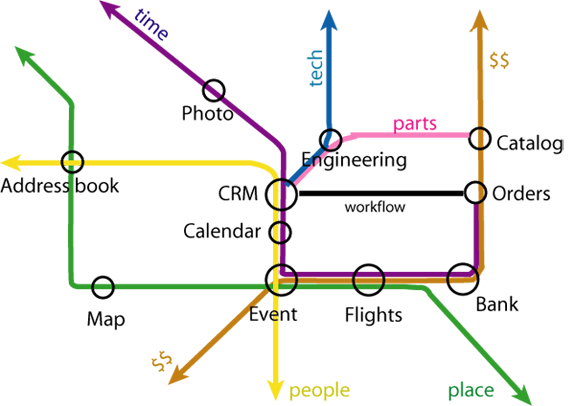
- XML: Binary, Processing Model
- Web
Services: Performance, Addressing, SemWeb Services, Policy
- * Web of Data - Semantic Web: Deployment, Query, Rules, Health Care/Life Sciences, Content Labeling, Geospatial, Multimedia
Semantics, perhaps eGov, etc.
What is the Semantic Web?
"The Semantic Web is an
... extension of the current web in which
... information is given well-defined
meaning,
... better enabling computers and people to work in
cooperation."
___
The
Semantic Web
Tim Berners-Lee, James Hendler and Ora Lassila
Scientific American, May 2001
Why Do We Need the Semantic Web?
- Tasks often require combining data on the Web, e.g.:
- Hotel, transport, meeting, personal info come from different
sites
- Cross-referencing disparate digital libraries
- Mining data from biochemical, genetic, pharmaceutical, patient
databases
- Integrating data across the enterprise
- Humans understand how to combine this information ...
- Not always easy (different vocabularies, languages, formats)
- Machines aren't smart enough to understand :-)
Why Can't Machines "Understand"?
Analogy:
What We Say to Dogs
- cartoon ...
- "Stay out of the garbage! Understand, Ginger? Stay out of the
garbage!"
What Dogs Understand
- "... blah blah blah blah GINGER blah blah blah blah ..."
What Machines "Understand"
 |
" ... blah
blah <a
href=http://www.xwz.com/foo.html>.text-link.</a> blah blah . . . ."* |
- Computers must "understand" more:
- Not human concept of "understanding"
- Just useful machine processing, for example, capturing the nature
of
- the "link-text" object
- the thing at the other end of the link
("http://www.xwz.com/foo.html")
- the relationship between the two (why are they linked?)
--
* where <a
href=...> is HTML for a "link"
Toward Processable Search Semantics
Google:
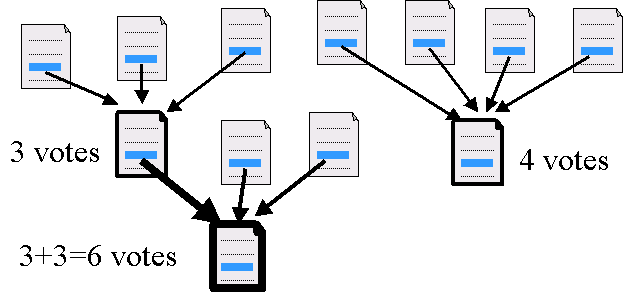
- Web links are machine processable
- Minimal semantics assumed: "This" refers to "that" = popularity
- Amazing results from minimal semantics
What if Web pages had more semantics?
(See Article by
Bijan Parsia)
Ways to Enable Machine Processing
Smarter Machines
- Teach computers to infer the meaning of Web data
- Natural language, image recognition, etc.
- ... this is the Artificial Intelligence approach
Smarter Data
- Make data easier for machines to find, access and process
- Express data and meaning in standard machine-readable format
- Support decentralized definition and management, across the
network
- ... this is the Semantic Web approach
Semantic Web: Data on the Web
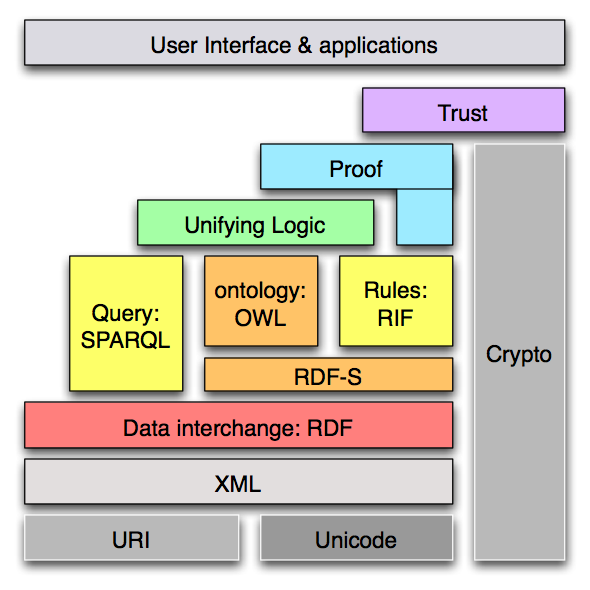 |
Machine-processable, global Web standards:
- Assigning unambiguous names (URI)
- Expressing data, including metadata (RDF)
- Capturing ontologies (OWL)
|
Uniform Resource Identifiers (URI)
- URIs have two
different uses:
- Unambiguous name for something
- Location of a document
- URIs can be used to identify definitions for concepts
- Especially useful for ontologies & metadata
Resource Description Framework (RDF)
- Semantic Web's Resource Description Framework: a W3C standard (Primer)
- Statements linking data so as to describe things (concepts,
objects, etc.)
- RDF : Data :: HTML link : Documents
- Descriptive statements expressed as triples:
- (Subject, Predicate, Object) or (Subject, Property,
Value)

- Most useful, Web-wise, when these are URIs, e.g. for this presentation:
RDF: Flexible Representation
Linking table and tree data ...
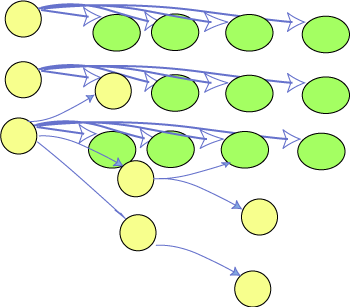
Web Ontology Language (OWL) +
- W3C standard (Guide, Overview)
- Defining concepts & relationships within area of knowledge
- Like DBMS data dictionary or schema, but ..
- Global, standard syntax based on RDF
- Can define more complex, graph relationships
- Using URIs as keys
- On the Web
- Includes standard vocabulary for describing properties and classes.:
- Datatypes (e.g., integer, date, string ..)
- Relations (e.g. subclass of, property of ..)
- Cardinality (e.g. exactly one ..)
- Characteristics of properties (e.g. symmetry)
- ... and more
Standards En Route
- Logic, proof, trust, etc. in the future?
Most of the Current Web
- Minimal machine-processable information -- dumb links
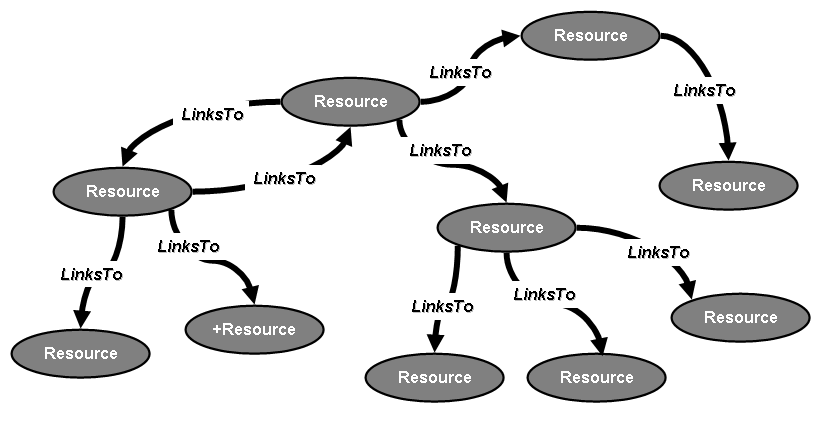
Semantic Web: "Smarter" Resources and Links
- More machine-processable information: data connected by
relationships

___
[ellipses = resources; color = one data
source; x: = one ontology]
(see also more detailed example related to book
searching and selling)
Enterprise Integration Today
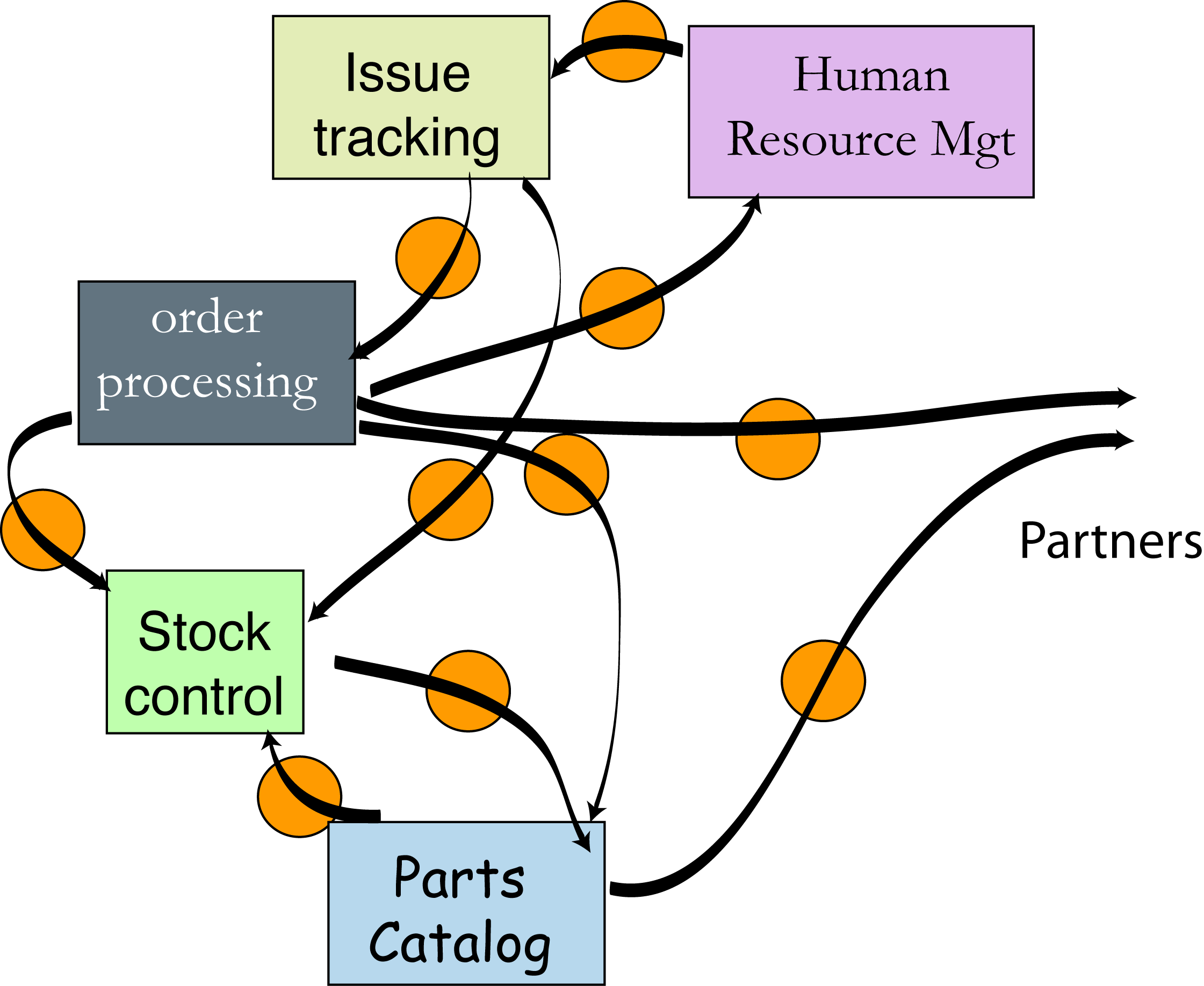
Enterprise Integration on the "RDF Bus"
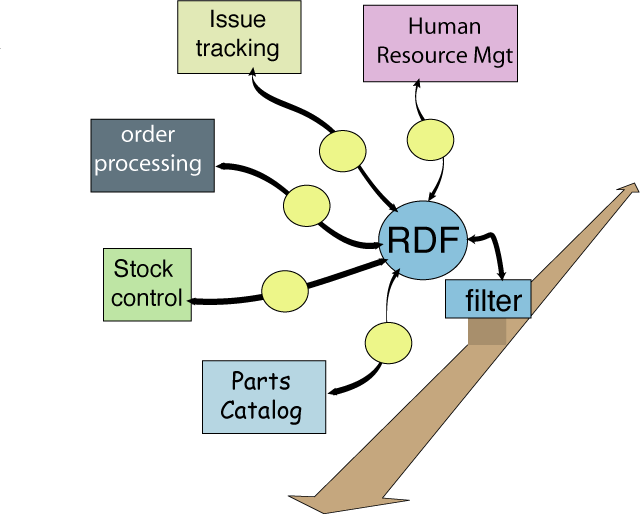
Applications Linked via Semantic Web

Life Science Onotologies Linked via Semantic Web
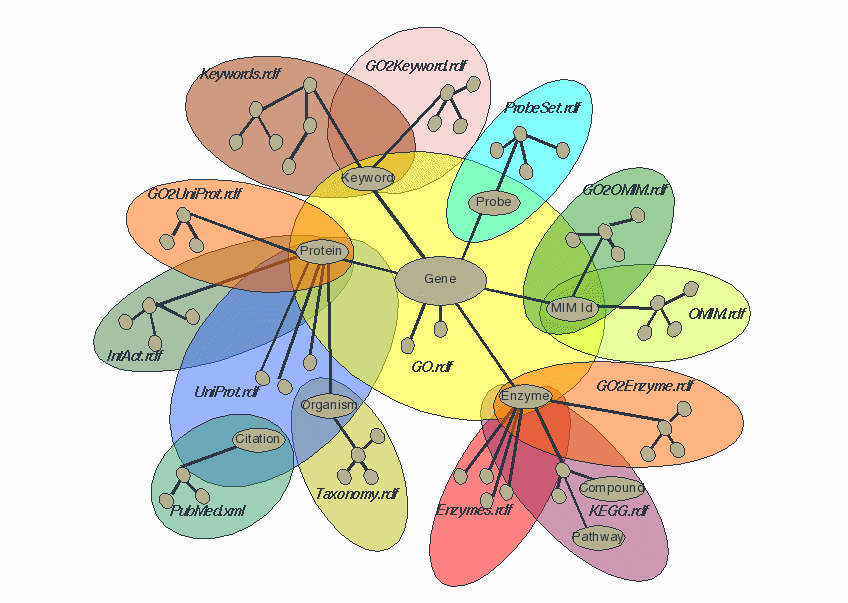
Challenges Ahead
- Providing information in Semantic-Web-friendly ways
- Exposing existing data stores as RDF
- Automated and human-assisted tools to create RDF stores,
ontologies, mappings
- "Chicken and egg problem" en route to "network effect"
- Addressing operational and social needs
- "Worldwide" Web
- Quality, provenance, versioning, explanation, safety
- Privacy, access control, authorization
- Trust
- Making data accessible to people and programs
- Usable interfaces to masses of semantic data
- Search, filtering, aggregation, processing, graphics
- Access via multiple modes, multiple devices
Getting Familiar with the Semantic Web
- See
more detailed tutorial*
- Research groups (e.g., MIT/DIG, UMD, UBristol, DARPA/DAML, etc.)
- Commercial initiatives (HP,
IBM, Oracle,
Nokia, etc.)
- Conferences (e.g., ISWC, SemTech, etc.)
- Follow W3C's work to drive incubation and standardization
- Large datasets are accumulating. E.g.:
- Other portal examples:
- Development tools
Timing Strawman
- 2006. Strategic planning. Model your data.
- 2007. Test by adding value to your
organization's data web:
- Build SemWeb wrappers around a few
databases
- Integrate disparate datasets to solve a few unsolved problems
- Offer filtered SemWeb data to partners,
customers
- 2008. Customers, partners demand SemWeb data. More tools available.
- 2009+. Build new, replace legacy applications.
Killer apps (or even failures) could radically change the
timeline.
Summary
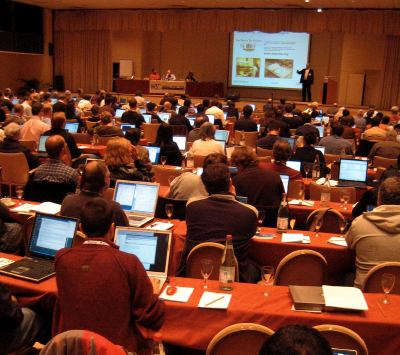
- Evolution toward one Web ...
- of Data and Services, on
Everything, for Everyone
- Strong business case for
- Understanding emerging standards
- Implementing standards as they appear likely
- Participating in standards orgs supports both of these
- A good resource ...

http://www.w3.org/
Extra Slides
- W3C Membership
- Growth of the Web
Who are W3C's Members?
"Third-class companies make products; second-class companies
develop technology; first-class companies set standards."
- W3C's Members includes
...
- most of the world's leading IT companies
- other large and small companies
- academic and research institutions
- government agencies
- non-profit organizations
- ... which are ...
- developing Web-based products
- using Web technologies
- conducting research on the Web
- developing specifications built upon W3C's work
* popular saying in Chinese business and
government, from "China’s Post-WTO
Technology Policy: Standards, Software and the Changing Nature of
Techno-Nationalism", by Richard P.
Suttmeier and Yao Xiangkui.
Full-fee Members (Jul
2006)





















![]()















